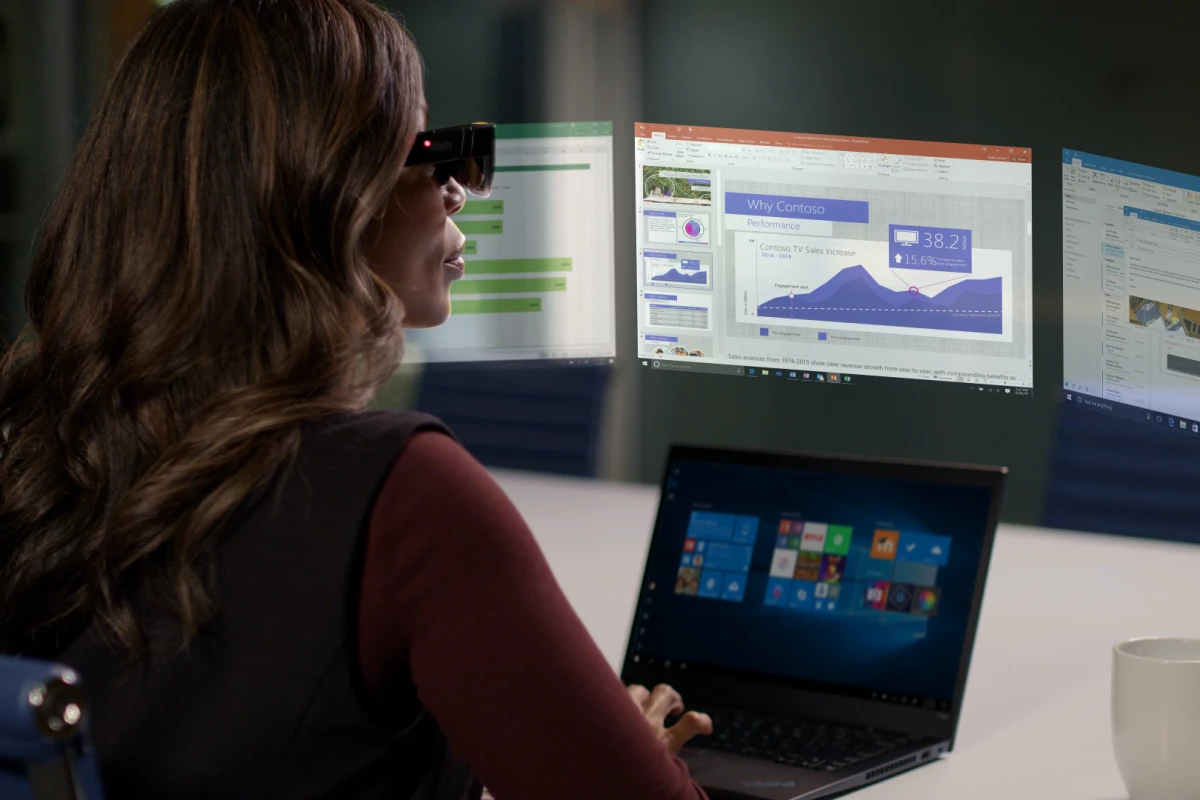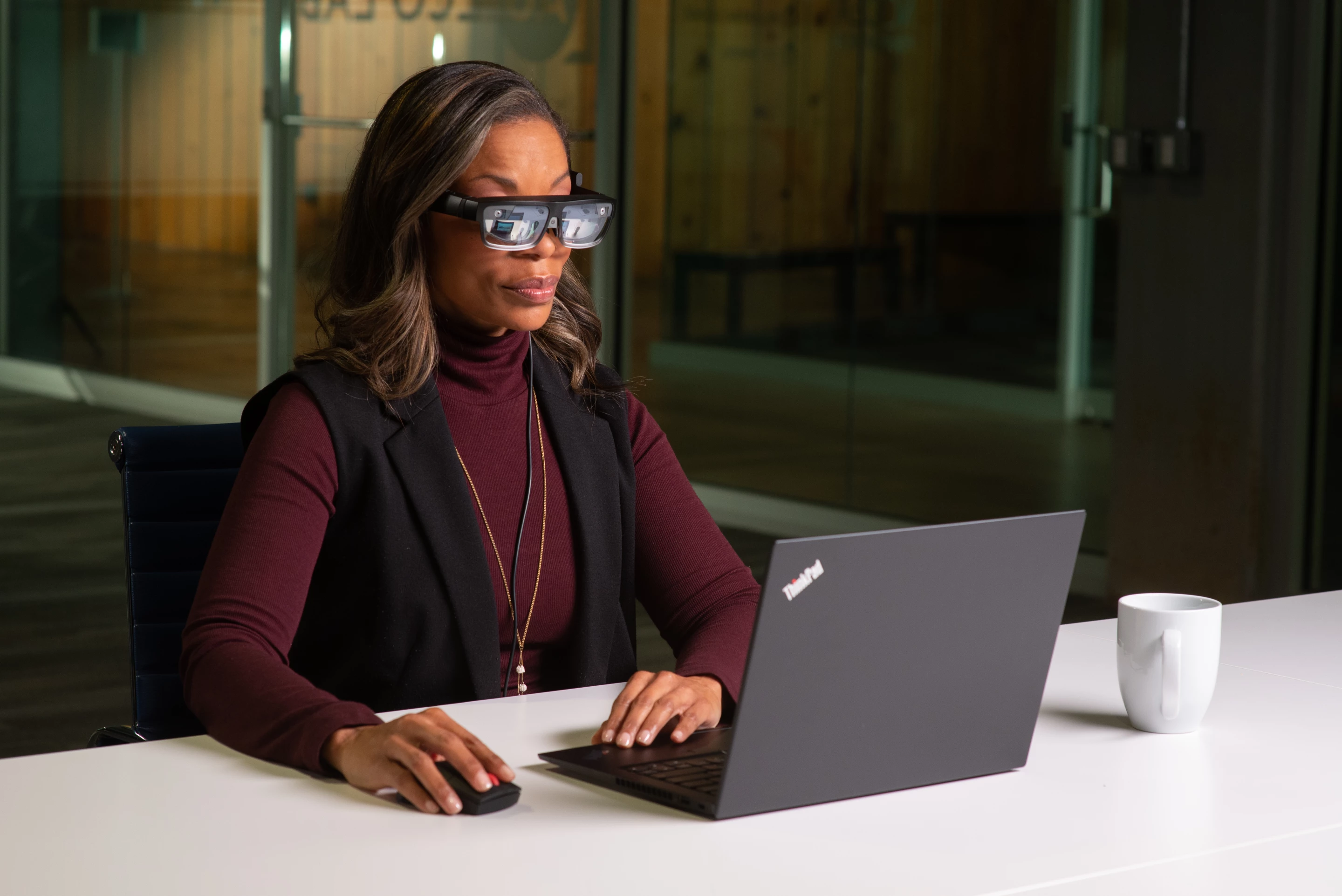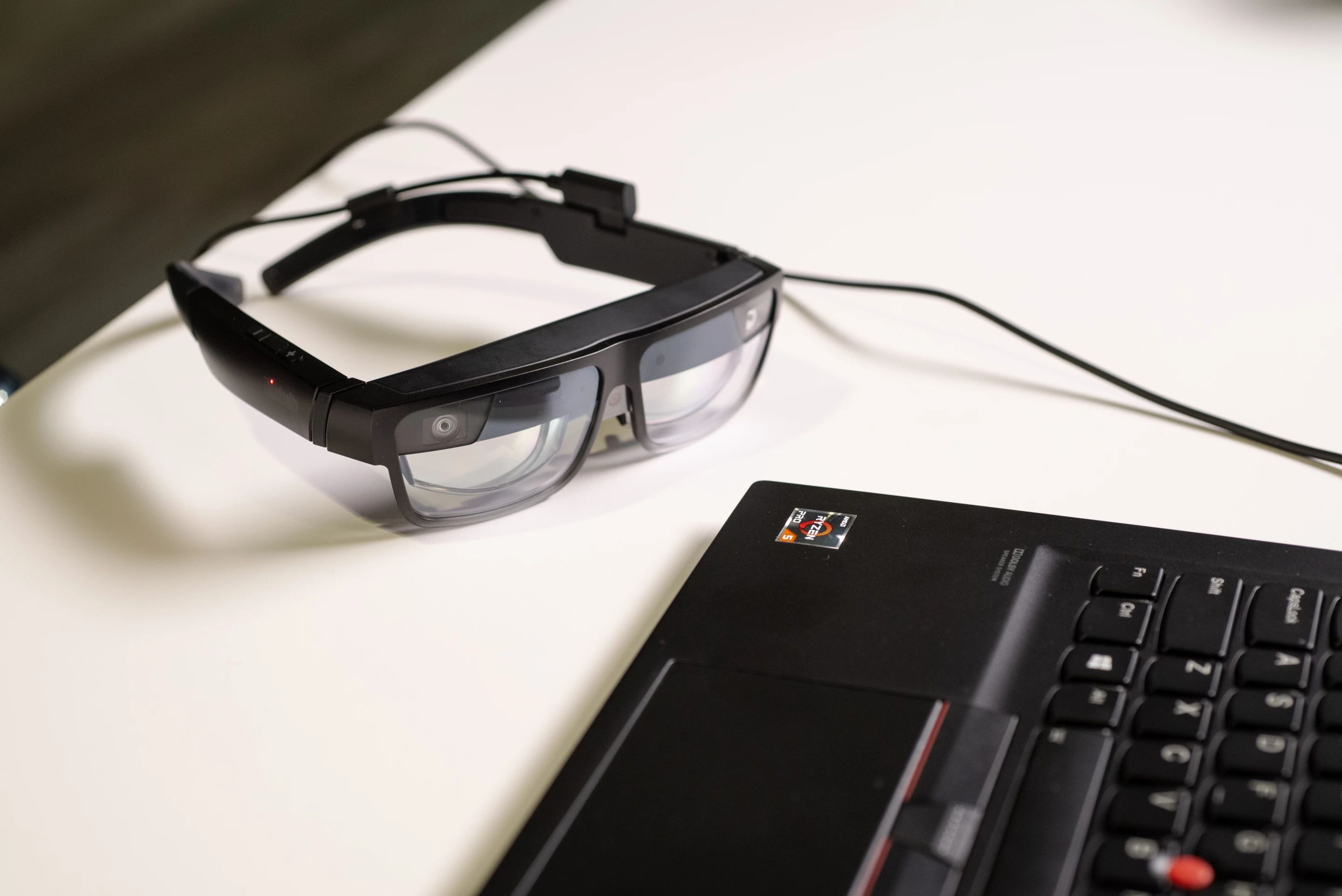It’s becoming more and more obvious that one display just isn’t enough for most people. If you’d rather not clutter up your desk with a whole bunch of screens, Lenovo might have the answer – the ThinkReality A3, a pair of augmented reality (AR) glasses that can project up to five virtual displays around you.
Where virtual reality (VR) envelops a user in a completely artificial world, AR works by overlaying virtual images over the real world. The highest-profile version was of course the ill-fated Google Glass, but since then Microsoft has taken up the mantle with HoloLens. Most phones now have some sort of AR functionality too, even if it’s usually just for catching Pokémon or giving yourself bunny ears in selfies.
But Lenovo has more enterprising endeavors in mind for the ThinkReality A3 unveiled at the online-only CES 2021 – the company claims it’s all about increasing efficiency and aiding collaboration, especially while working remotely. To do that, the headset packs a pair of 1080p displays into a frame that doesn’t look too bulky, as far as these things usually go. Dual fish-eye cameras track the room in 3D to figure out where to place the virtual objects, and an 8-megapixel RGB camera can record or stream 1080p video.

As the name suggests, these fancy specs are built on the ThinkReality platform, the AR and VR system that Lenovo has been pushing for a few years now. The new A3 model appears to be a more compact version of the A6, which the company showed off last CES.
There are two models of the ThinkReality A3, depending on what you want to do with it. The PC Edition plugs into a desktop, laptop or notebook computer via USB-C to place up to five virtual monitors into your field of view. That can let users set up big workspaces without having to take over the whole kitchen table, or work from different places without lugging giant screens everywhere with you.
The Industrial Edition, meanwhile, is made to connect to Motorola smartphones, so it’s a bit more portable. The idea is that it could be used on factory floors, retail, hospitality and other industries to visualize information, monitor conditions and train new staff, among other things.
Lenovo says the ThinkReality A3 will be available in mid-2021, but so far hasn’t specified a price. Check it out in action in the video below.
Source: Lenovo






